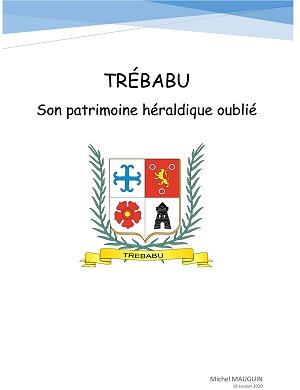
GPS : 48°22'15.5 N 4°44'09.9 W
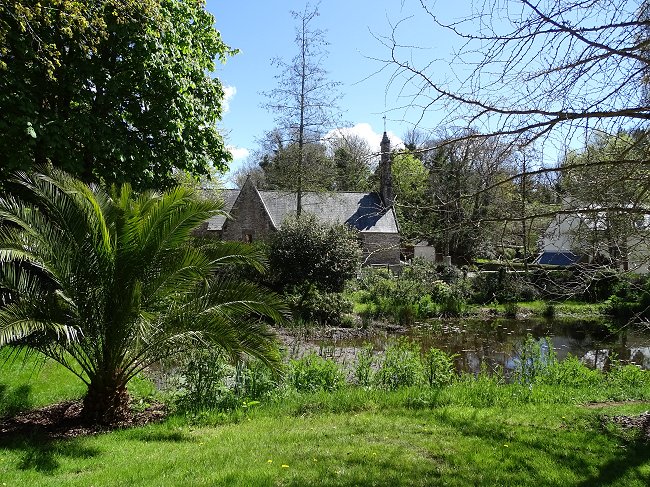
Access:
From Le Conquet, take the D67 road towards St-Renan and 1 km after the crossroads, turn left towards Trébabu.
Park 200 m down the coast.
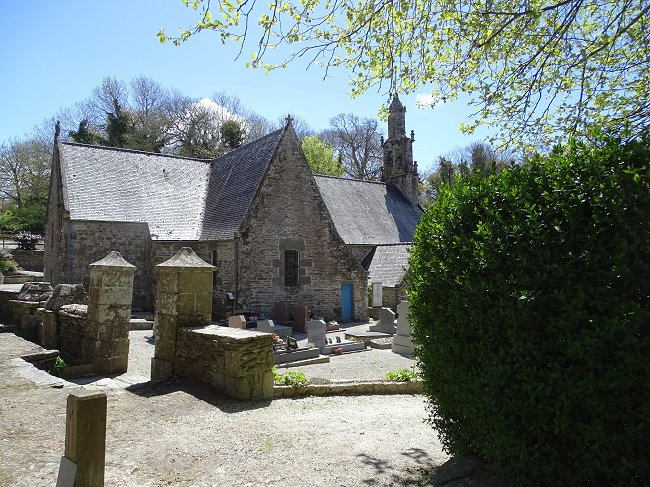
Nestled at the bottom of its pretty valley and surrounded by the tombs of the communal cemetery, the church of Trebabu is dedicated to Saint Tugdual. This Welsh monk1 founded a monastery in this parish in the VIth century. Familiarly called Saint Pabu, this saint, who belongs to the 7 main saints of Brittany, gave his nickname to Trébabu, but also to the commune of Saint-Pabu near Ploudalmézeau, and to that of Pabu, near Guingamp in the Armor coasts. The name of Saint Tugdual is also that of a commune in Morbihan, near Pontivy.
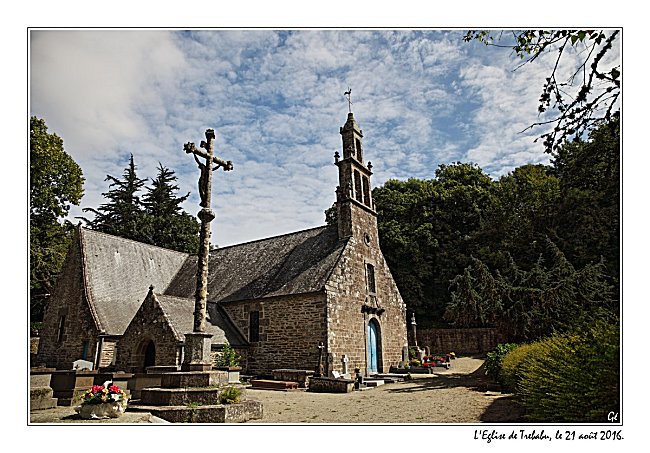
© Photo Gérard Bosch
The building, very sober, in the shape of a Latin cross, was built in the middle of the XVIIIth century to probably replace an older building of which there is no evidence. As you can see in the Notre-Dame du Val chapel, located 2 km away, the main gate opens into a bell tower wall.
Notre-Dame du Val Chapel
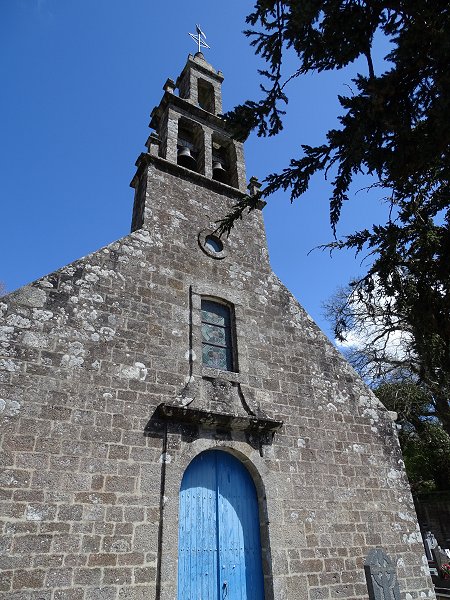
However the usual entrance is on the north side through a porch lined with two stone benches.
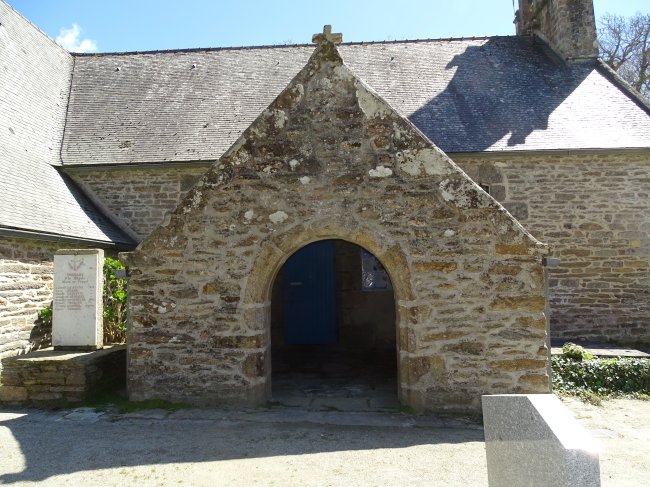
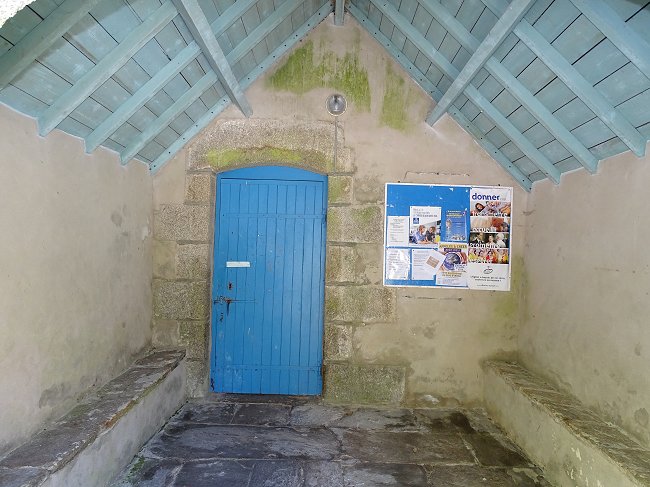
If the architectural simplicity characterizes the exterior of the building, the interior doesn't include ostentatious decorations either. The light blue colour of the barrel vaults blends perfectly with the whiteness of the walls decorated with only a few statues. From this set emanates a peaceful impression of softness and sobriety.
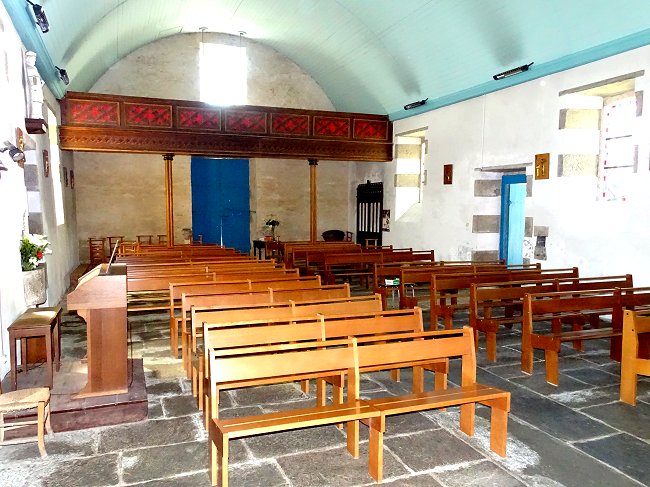
Behind the altar surrounded by two angels perched on columns, the image of Christ sits between the statues of Saint Tugdual on the right and Saint Andrew on the left.
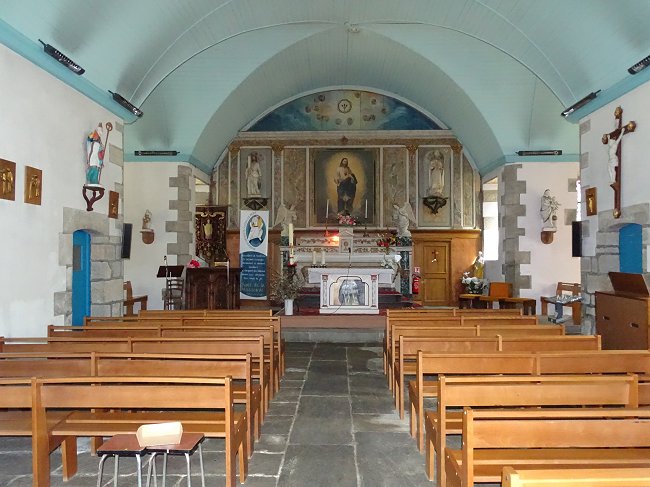
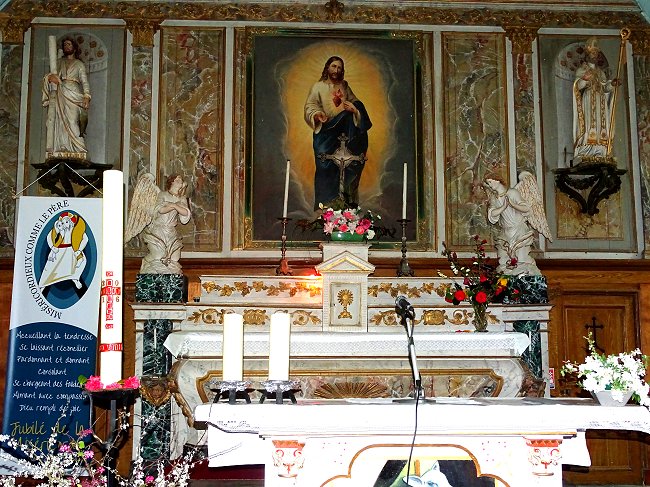
The patron saint of the building is wearing a mitre and holding an episcopal crosier reminding us that in 542 he was appointed first bishop of Tréguier, the capital of Trégor, by King Childebert 1st, the son of Clovis. On one of the walls of the nave is a second statue of Saint Tugdual.
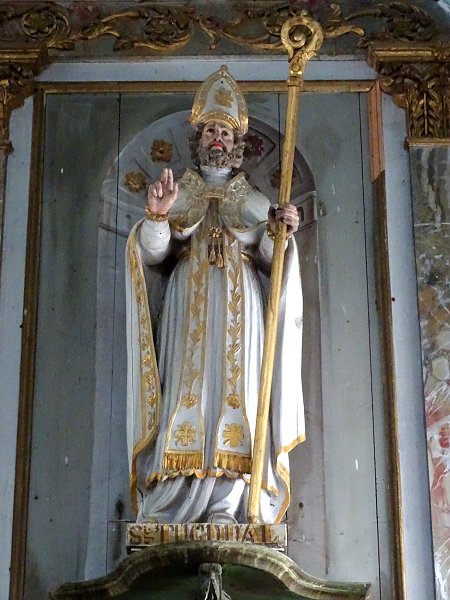
|
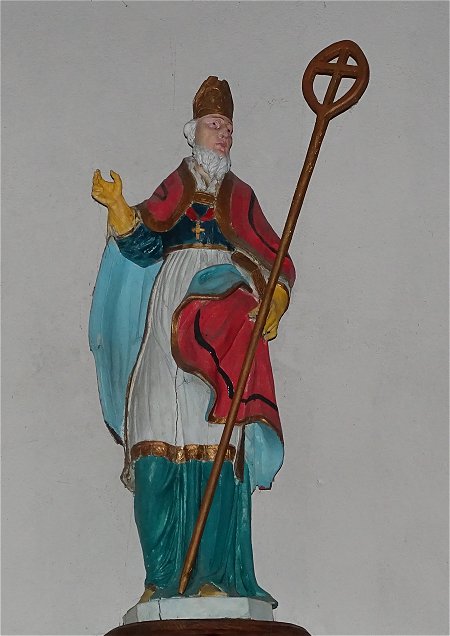
|
As for Saint Andrew, Saint Peter's brother, who was like him a fisherman on Tiberias lake, he is represented holding two fishes in his right hand and holds with his left arm a section of the oblique cross ( called St Andrew's cross) on which he was crucified in Greece in Patras. The presence of this statue recalls that it was to Saint Andrew that the first cathedral founded in Tréguier by Saint Tugdual was dedicated.
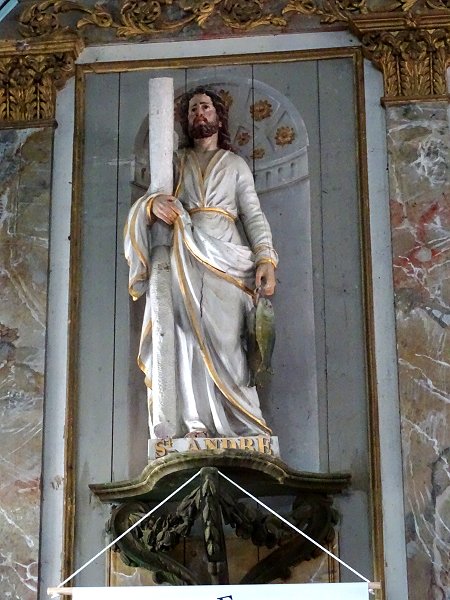
Two other statues of the church represent the Virgin, named here Notre Dame du Val , Our Lady of the Valley. One will notice on the right the finesse of its clothing ornamentations. Her banner had always appeared during the pardon of Notre-Dame du Val on Assumption Day.
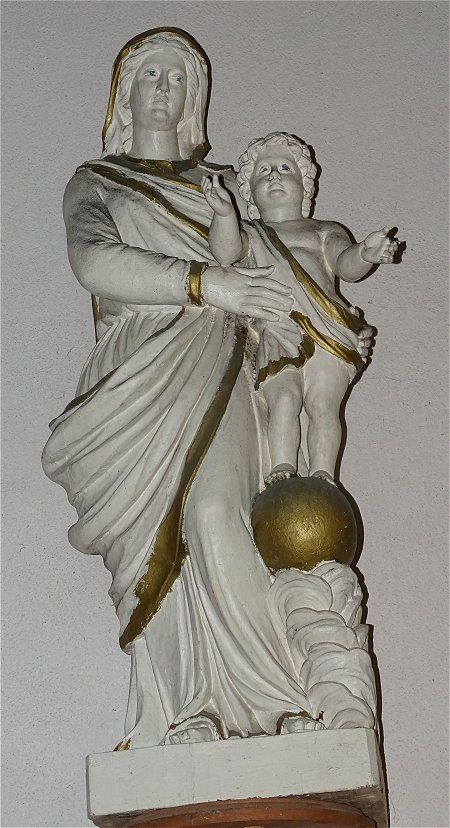
|
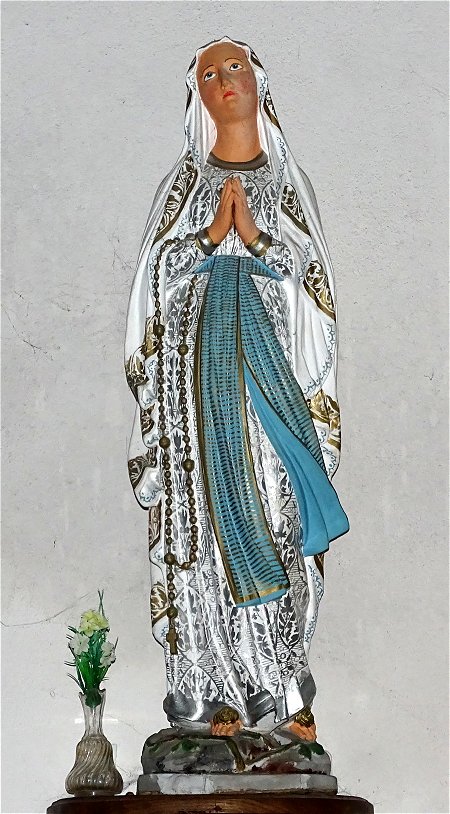
|
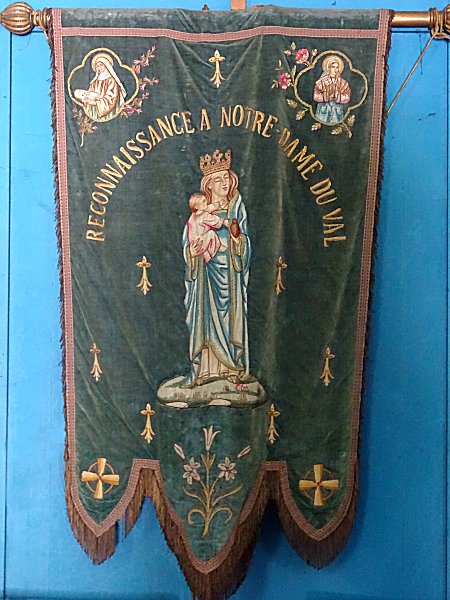
Saint Anne, the Virgin's mother, is not forgotten either. She is represented more soberly, educating her daughter.
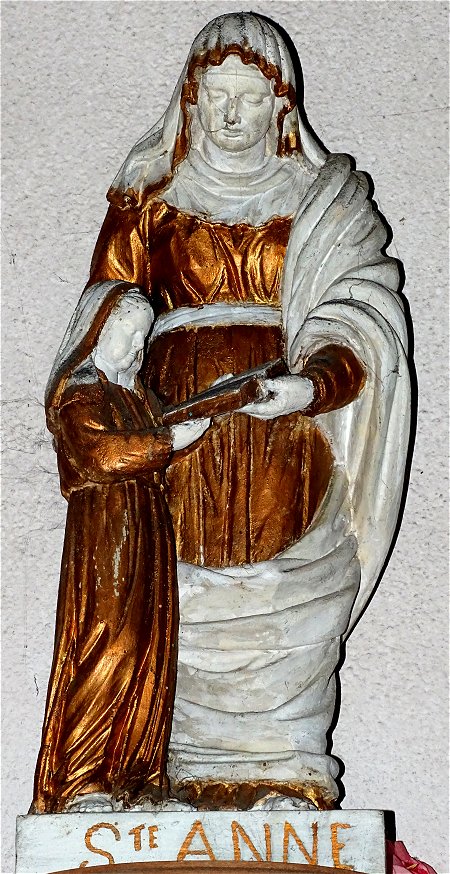
A last statue represents Saint Yves. This priest ( Yves Hélory de Kermartin 1253 - 1303) from Tréguier where he spent a large part of his life, is particularly venerated in Brittany. He was canonized by the Pope in 1347 because of his austere life, always turned towards the poor and respect for justice and the law 2. He is represented here holding in one hand a purse reminiscent of the money he distributed to the poorest, and in the other a scroll of parchment evoking his office as ecclesiastical judge. Saint Yves is the patron saint of the professions linked to justice, and in particular of lawyers. His presence in this church shows how great is the parish's link with the former bishopric founded by Saint Tugdual.
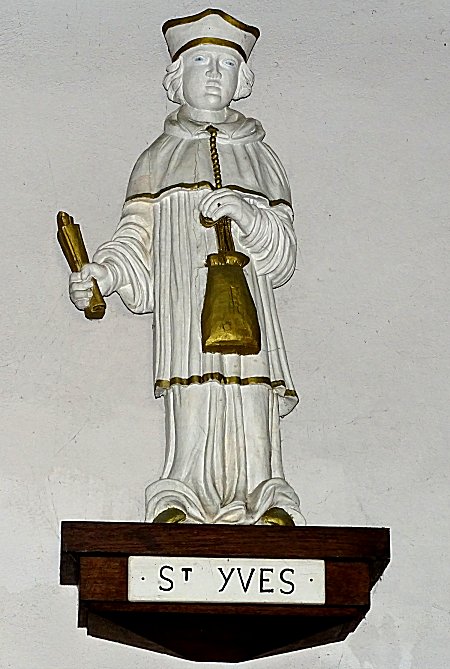
At the back of the nave, under the gallery, one will notice the baptismal font. The basin, provided with a lid, is supported by a pink marble column.
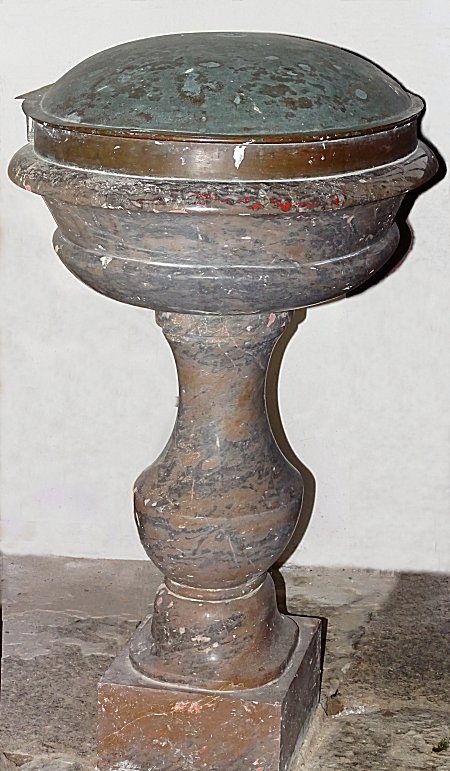
As we leave the building, we will not fail to discover the oldest tombs which adjoin it. These are the noble families of the parish. Their coats of arms are carved on it. In the enclosure of this small cemetery, which access is defended by two 'échaliers'3 there is neither chapel nor ossuary. A calvary dominates the tombs surrounding the church.
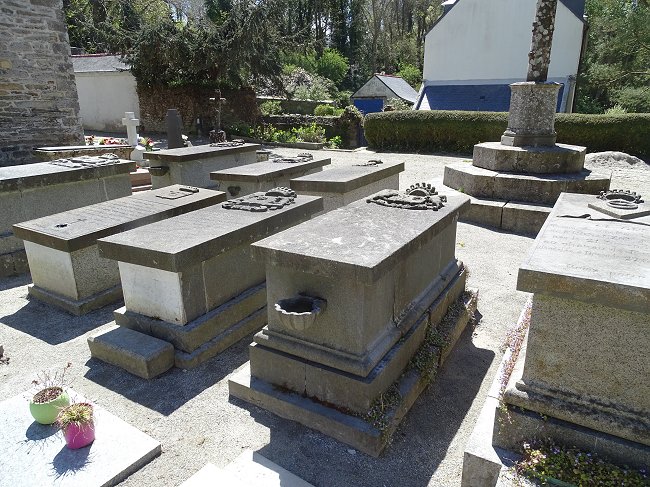
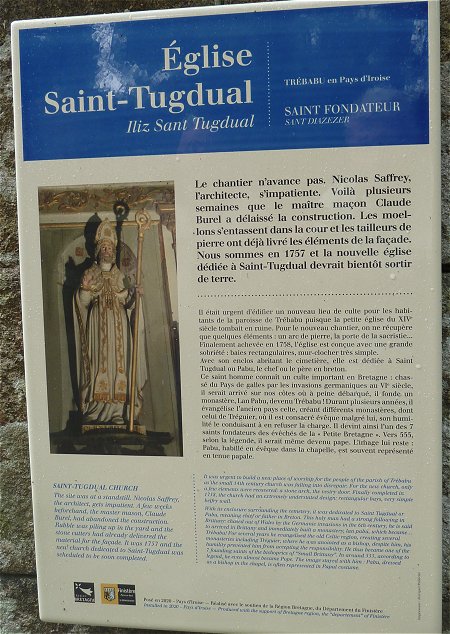
***
-2- It is said, for example, that in Rennes, that one day Saint Yves had to render justice to an innkeeper who complained of a beggar often prowling around his kitchens and that he suspected of stealing food from him. But not being able to prove the slightest crime, he accused him of coming to smell his preparations. Saint Yves condemned the beggar to throw some coins on the table and then retake them back. As the innkeeper was surprised by this judgment, he retorted that the sound of the coins paid him well for the smell he claimed to have been stolen from him.
-3- In Brittany, we call "échalier" the access to an enclosure which obliges to step over a flat stone placed on edge. This device was intended here to prevent animals from entering the cemetery. We can also think that by imposing an effort on humans, it symbolized the difficulty of passing from the world of the living into the kingdom of the dead. There are also 'échaliers' around some washhouses or defending access to a well such as the St-Ronan well in Molène.
( The wash-houses the country of Iroise ) ( The St-Ronan well )
Animations are planned every year in the church: exhibitions, concerts and songs. See on this website the section Animations and festivals .
***
Sources :
Michel Mauguin : "Trébabu, son patrimoine héraldique oublié".




